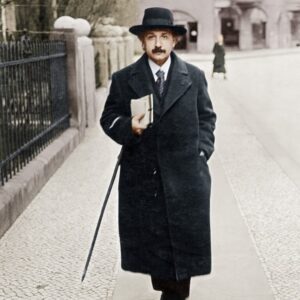Baby Yoda has a Long Life Ahead, Qubits Need Error-Correction to Live Long Enough to Sustain Quantum Internet Communications
Quantum link bootstrapping using a RuleSet-based communication protocol
Full Introduction from the source ~
The Quantum Internet will be a world-wide network interconnecting diverse quantum networks, both small scale and large scale. These independent, interconnected networks are utilizing different technologies and managed by different organizations, known as Autonomous Systems in the classical Internet. The role of such a network is similar to the classical Inter-net: to provide to users a quantum information service between arbitrary nodes.
The Quantum Internet brings us new capabilities that fundamentally cannot be reproduced by classical technologies. Some of the well-known examples include quantum key distribution(QKD) to securely share strings of random, secret classical bits suitable for encrypting messages, accurately synchronizing clocks over a network, distributed computing such as the secure delegate quantum computing service named quantum blind computing, and other cases involving more than one quantum computer working on difficult problems that cannot be solved by classical supercomputers.
Quantum repeaters, introduced by Briegel et al. in1998, are the core idea of a robust quantum network. A quantum repeater node has four main roles. First, a repeater needs to be able to physically create, distribute and store entangled resources between neighbors. The second role is to manage errors on qubits. Errors can be corrected via quantum error correction, or detected and discarded from the system via quantum purification. Third, the node connects stored resources to increase the span of entangled states over a multi-hop route, typically via entanglement swapping. Lastly, each node needs to participate in management of the network.
Quantum systems are inherently noisy. Knill and Laflamme discussed the imperfections of quantum computer devices, and introduced a fault-tolerant quantum communication scheme in 1996. Later, Muralidharan et al. categorized quantum repeaters, based on capabilities, into three generation classes. The 1st generation quantum repeater network works based on Purify-and-Swap. The main task of a repeater node is to perform purification to detect and discard erroneous resources, and to perform entanglement swapping to connect non-adjacent nodes. While this scheme is relatively simple and straightforward, its capability could strictly depend on the distance, mainly limited by classical latencies for receiving acknowledgements regarding purification and entanglement swapping. Its performance is also known to be limited by memory lifetime. The2nd generation utilizes encoded Bell pairs prepared be-tween adjacent nodes, and performs quantum error correction… In the 3rd generation, quantum states are directly encoded to a block of physical qubits that will be sent through the channel. The receiver node can correct errors using the received physical qubits. The 3rd generation is very similar to the 2nd generation, but requires a very high entanglement success rate. These two generations are semantically identical but temporal behavior of the 3rd generation is more like classical packet forwarding networks.
In all three generations, establishing an end-to-end quantum connection requires knowledge regarding the links, and cannot be accomplished without coordinating quantum operations among the nodes involved. The link bootstrapping protocol is capable of quantifying the achievable link fidelity. Quantified link fidelity can be used for different purposes such as for quantum routing and end-to-end connection setup. For example, the order of performing entanglement swapping impacts the output fidelity, even over the same linear path, when links have different capabilities.
In this paper, we introduce the RuleSet-based communication protocol, which we use to enforce consistency in operations over a particular connection without the need to exchange classical messages before each operation. This allows each node to make coordinated decisions autonomously, reducing wait round-trip times. Using RuleSets, we simulate quantum link bootstrapping that consists of recurrent purifications and density matrix reconstruction via link-level tomography, over a quantum repeater network running under specific datalink protocols based on with currently available hard-ware. We also estimate the link throughput from the bootstrap-ping process time relative to the measured Bell pairs. We execute the recurrent purification based on the standard Single-selection or on Double-selection, and find that switching from Double-selection to Single-selection in the middle of the protocol offers an advantage in terms of fidelity and throughput when resources between adjacent nodes have low fidelity.
Content may have been edited for style and clarity.

